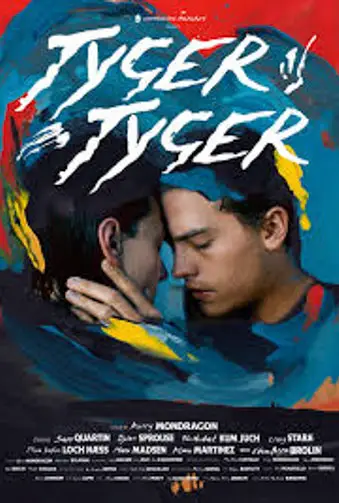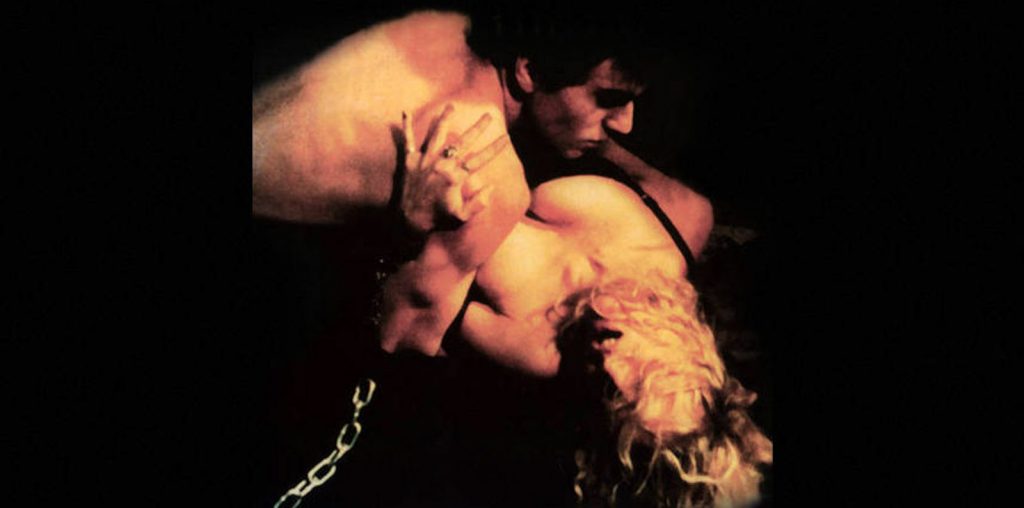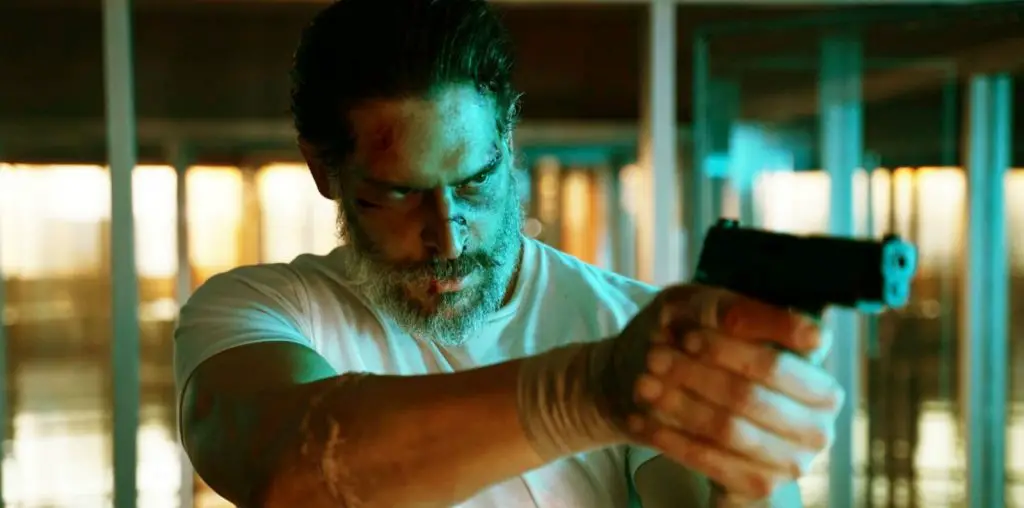
How would one describe Kerry Mondragon’s Tyger Tyger? A neo-noir, futuristic western? A Terry Gilliam-like, psychedelic trip into the heart of America’s opiate crisis? An impressionistic study of an aimless generation? Neither of these terms really apply to this rambling, meandering, disorienting, ambitious mess of a film. It aims for “cult classic” status but instead feels like the product of some sort of cult.
In a premonition of things to come, it all starts off confusingly, with the impossible-to-follow robbery of a Sherman Oaks pharmacy. Blake (Sam Quartin) is tasked with delivering the stolen meds to a doctor in Free City, a lawless metropolis that – spoiler alert! – we never get to see. Blake’s mute friend, Bobby (Nekhebet Kum Juch), tags along. They kidnap the heroin-addicted Luke (Dylan Spouse), whom Blake loves, destroy his drugs, and leave him no choice but to join them on their schizophrenic journey.
The trio travels through the country, Luke experiencing withdrawals in the back seat. They meet the scraggly-haired Joe (Craig Stark) on the way, who offers them a spoiled crab to eat (don’t ask). Our heroes rob and ditch him instead. After their car breaks down, they stumble upon a detox group of ragtag individuals in the desert. Among them is Emerald (Thea Sofie Loch Næss), who is also supposed to assist Blake on her journey and invites her to crash in the “dead bus” (again, don’t ask). Our leads end up staying there, drifting among other recluses, until Joe catches up with them.

“Blake is tasked with delivering the stolen meds to a doctor in Free City…”
In an eerie premonition of the COVID-19 pandemic (the film was shot in 2019), characters intermittently wear masks, yet a disease is never identified; it looms in the background, ever-present, ever-ambiguous. It’s not the only ambiguous part. What are the characters’ motivations? What’s their mission? Has Los Angeles become Free City, and if so, why is Sherman Oaks still Sherman Oaks? (I guess the valley really does never change.) “Why make up our faces when they’re already maked up?” Emerald asks at one point. Um, exactly.
It all gets wearying, fast: the jarring edits, the multitude of filters applied with reckless abandon to every other frame, the insistent synth-pop score, the non-stop non-sequiturs. Tyger Tyger’s fragmented, meandering structure is bound to induce headaches. Mondragon, who wrote and directed, attempts to mask the lack of substance with style – the problem is, his style is all over the place. “It’s all a kind of a vibe,” Luke tells Blake at one point. The issue is, the vibes are deeply unpleasant. This is not a world you’ll want to revisit.
Credit where credit’s due, the filmmaker does make the most of the (presumably) Californian locations, with picturesque shots of sun-scorched vistas, all saturated reds set against neon greens and rusty oranges. Mondragon strives hard for psychedelic but ends up psychotic. He clearly had some sort of a vision, perhaps induced by a hallucinogenic mushroom experience, but Fear and Loathing in Fear City this ain’t. If you enjoy being sober around your trippin’ buddies, then Tyger Tyger may be for you, but you’re much more likely to feel left out.

"…picturesque shots of sun-scorched vistas, all saturated reds set against neon greens and rusty oranges."


